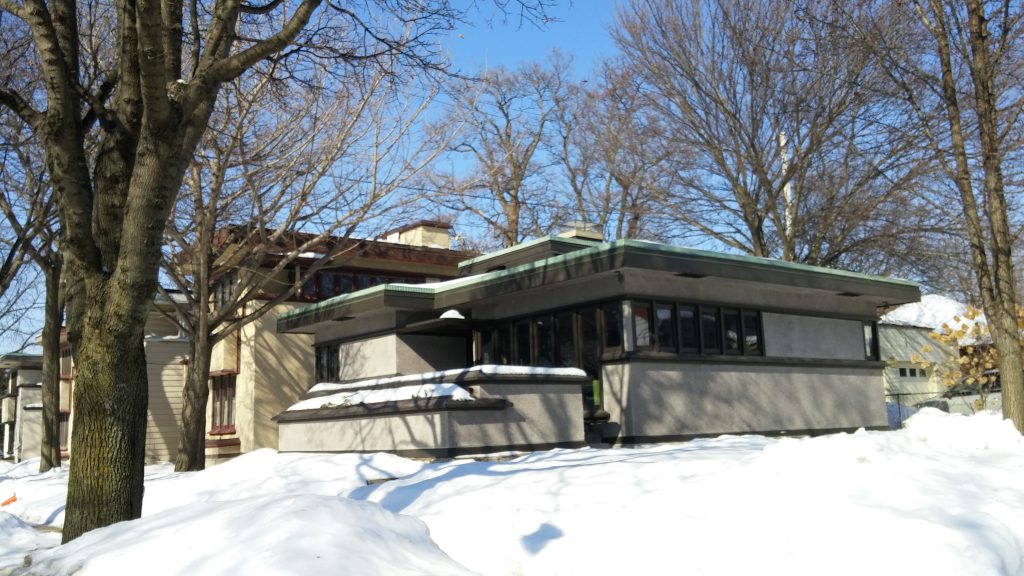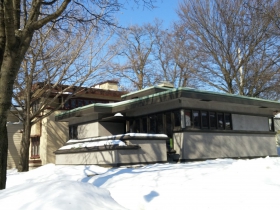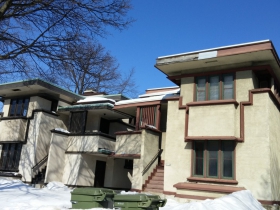The Man Who Made This Cream City
Manufacturer George Burnham helped make city famous for cream-colored bricks, named a south side street.
George Burnham was “the man who gave Milwaukee the name of the ‘Cream City,’” according to Burnham’s obituary in the Milwaukee Sentinel in 1889. That was undoubtedly an overstatement, but Burnham, as the largest producer of Cream City bricks, did play a major role in the industry that led to the nickname.
It was the color of the bricks, though, that gets the credit for the name. When most bricks are fired, the iron in the clay turns them red. But the high percent of calcium and magnesium in some deposits of Milwaukee clay effectively neutralized the iron and the bricks emerged a pale yellow or cream color, much to the surprise, and disappointment, of early brickmakers in the mid-1830s.
They needn’t have been disappointed though. The bricks were of good quality. They did not sell well initially because they added to the expense of building. But a few building owners did use the bricks and the light, pleasant look of the resulting pale-yellow structures was appealing to many people. As more cream-colored buildings were constructed, visitors to the metropolis were struck by the light color of edifices throughout the town and the name was born. Milwaukee began to be referred to as “The Cream City of the Lakes,” or “The Cream City of the West,” or just “The Cream City.”
The largest brickyard in the city was run by George Burnham, who was born in New York State in 1816 and learned the brickmaking trade from his father. He and his brother, Jonathan, came to Milwaukee in 1843 and began making bricks at the foot of the bluffs on the north side of the Menomonee Valley at N. 14th Street. After a year, they moved their operation to N. 11th and W. Wells streets and worked the area for three years. When they abandoned that site, they left a large hole that took years to fill in.
In 1848, the brothers purchased over a half mile of land along the bluffs on the south side of the Valley between S. 12th and S. 22th streets. They dissolved their partnership in 1856 and each worked independently, though they eventually brought their sons, and even their grandsons, into their businesses.
By 1880, George Burnham’s company was producing 15 million bricks a year with a workforce of 200 men while Jonathan’s 100 employees were manufacturing millions more. By the end of the nineteenth century, the deposits of clay for the creamy bricks had pretty much run out. But Burnham’s descendants still produced bricks, over 30 million annually in the 1920s, although most of those bricks were the standard red color.
Brickmaking made George Burnham a very rich man. He invested in plank roads, meatpacking, grain storage, building construction, and railroads. He also put money in real estate – including iron lands in Texas, silver mines in Utah, and farmland in Iowa.
In 1871, he invested in a subdivision south of Mitchell Street with Daniel Rogers and John Becher. Each of them named a street for himself and Burnham Street, Rogers Street and Becher Street were added to the city’s map.
In Milwaukee, Burnham Street begins at S. 3rd Street and extends to S. 42nd Street where it runs into West Milwaukee and then West Allis. The most notable buildings on the street are the six homes in Frank Lloyd Wright‘s Burnham Block, which was Wright’s vision of affordable housing. The homes are on the north side of W. Burnham Street between S. Layton Boulevard and S. 28th Street.
Along Burnham Street
Carl Baehr is the author of Milwaukee Streets: The Stories Behind Their Names and From the Emerald Isle to the Cream City: A History of the Irish in Milwaukee.
If you think stories like this are important, become a member of Urban Milwaukee and help support real independent journalism. Plus you get some cool added benefits, all detailed here.
City Streets
-
Revised Milwaukee Streets Book Dishes the Dirt
 Nov 3rd, 2025 by Michael Horne
Nov 3rd, 2025 by Michael Horne
-
The Curious History of Cathedral Square
 Sep 7th, 2021 by Carl Baehr
Sep 7th, 2021 by Carl Baehr
-
Gordon Place is Rich with Milwaukee History
 May 25th, 2021 by Carl Baehr
May 25th, 2021 by Carl Baehr




























